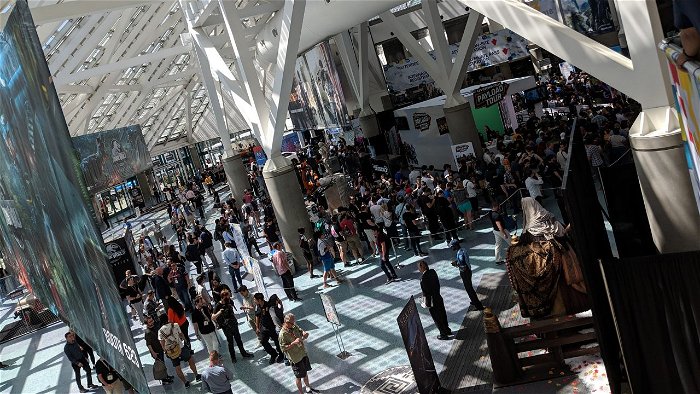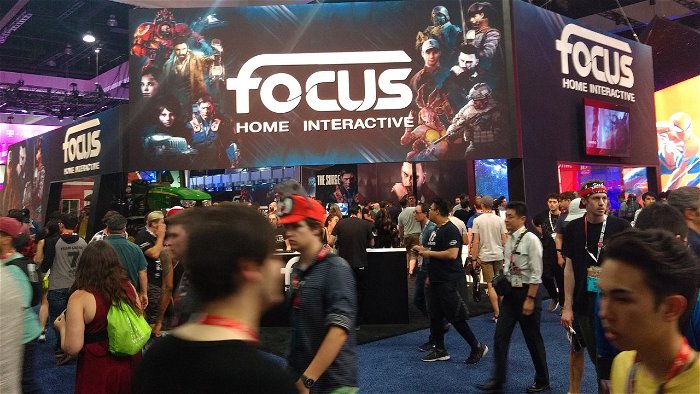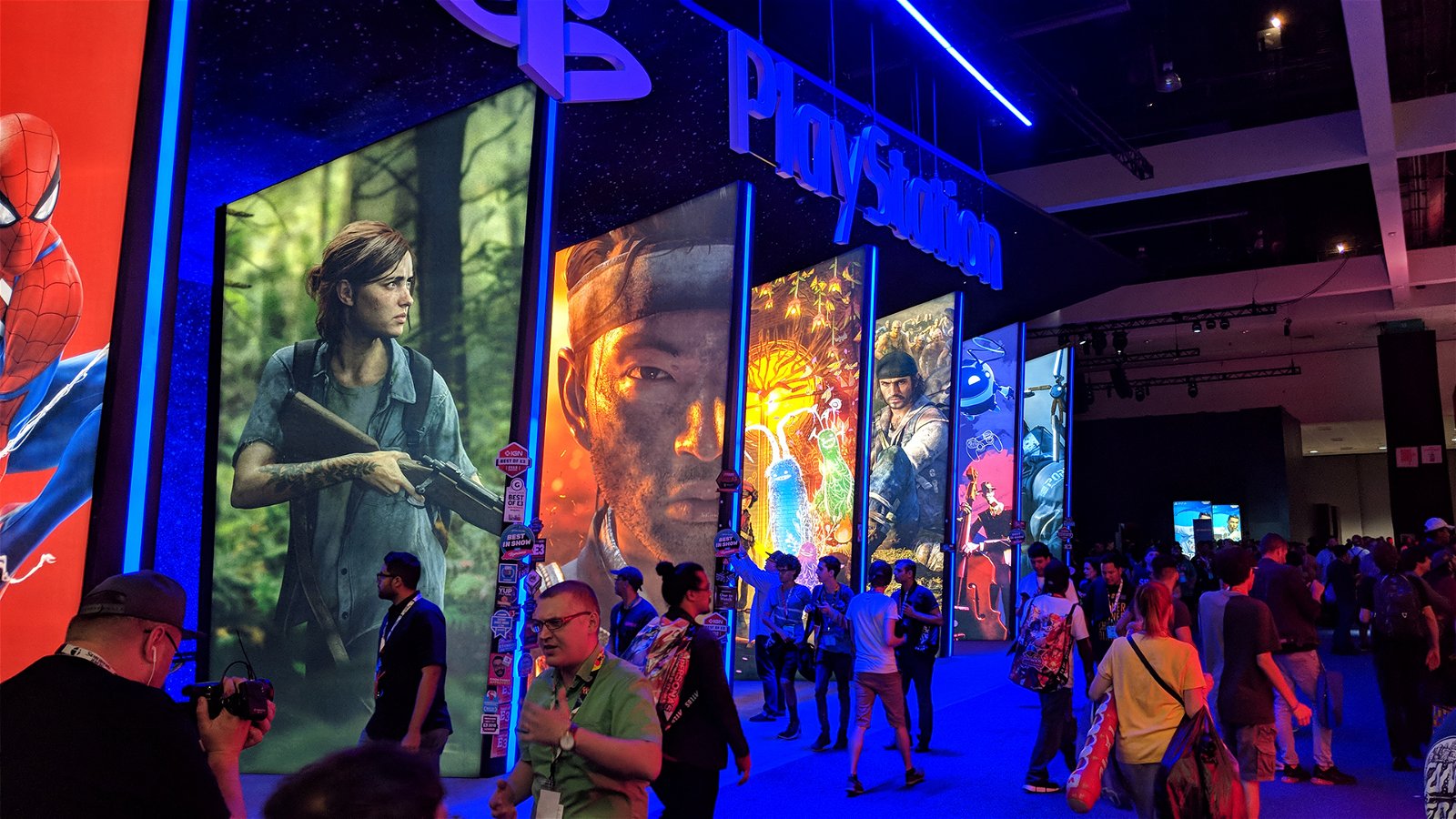E3 2018 has come and gone. The massive booths, meeting rooms filled with developers and executives, and eager press have finally made their way back home. While the halls of the LA Convention centre may now be empty, there remains the lingering question on what E3 wants to be.
While it is billed as a trade conference, bringing the biggest and brightest to Los Angeles to show off the games we will all want to play, it has been trying to make the transition to an industry and community convention. While in theory, this is fantastic — it gives the public a chance to see all the latest games early, allows developers to get games in the early stages of development into the hands of the public and get valuable player feedback, and help pay for the massive conference — it also hinders the central purpose of the conference: a space for publishers and studios to discuss trade matters. As E3 stands now it does a disservice to both the industry it is made for and the public that wants to experience the fabled show. In its attempt to satisfy both masters, neither are treated with the respect and attention they deserve and in the end, everyone suffers.

Since E3 made the choice to allow the public in back in 2017, the think pieces about how E3 is for Press and Industry have been legion. It is so easy for many of us who are veterans of the conference to view E3 as a commodity that is an exclusive space, owned by the industry. A commodity, that if shared with the public, will lose its magic, and fail altogether. But the fact remains, E3, as an event, needs to evolve. Too much time, money, and effort are spent on bringing developers from all over the world to one city to keep it for only a select few. It makes sense why publishers and the ESA want to have a piece of that public pie that PAX, SDCC, and so many others maintain.
But when you invite the public in, things need to change. You can’t expect million dollar deals to be made on the show floor when someone is playing their Nintendo Switch five feet away (as is a central staple to how trade shows are run). When the industry has the freedom to meet quickly, either on the show floor or at a location nearby, more things get done.
With a slew of additional people now on the show floor and in all neighbouring hotels, these connections need to be planned, and sometimes because of the logistical difficulty, these deals fall through or fail to get off the ground. E3 brings people from all over the globe to one central location, and if any companies, investors or developers want to take advantage of the opportunity, they need to strike while the iron is hot. With countless deals in the past being made over drinks in hotel bars adjacent to the convention centre, this limits the freedom for commitments to be made in confidence. E3 of days past allowed a sanctum away from the public, allowing frank discussions that can change the landscape of the industry.
A prime example of this, in 2018 especially, is how the preview of Cyberpunk 2077 was handled. Having a demo that was so sought after that journalists, industry members and every business executive wanted a peek at is nothing new for E3. There have been plenty of demos in years past that drew crowds, and with every one, there were a few people that had to walk away disappointed. It is the simple reality that there are only so many hours in a day to fit people in for a presentation, it is the way of things. The problem arises when the public learns about an industry only demo, and tries to find a way in.

These demos are designed to maximize exposure to any one game. Each seat filled needs to provide either the potential for investment, involvement or the kind of substantial exposure provided by recognised media, in order for the game to succeed. While many of these publishers would love to show the demo to everyone, with limited time, and limited seating, they need to make these hard calls.
These rooms are meant to be industry only. This allows major developers, who can be viewed as celebrities to many, to watch and see these demos without fear of being accused or bothered when trying to enjoy the work of peers in the industry. In my demo, for example, I had Hideo Kojima, his translator and other members of his team. While the public members around the theatre were civil, at least from what I had seen, the simple fact they formed a crowd around the theatre made it hard for these industry leaders to chat with peers or safety conduct business without being swarmed by adoring fans.
This is in no way the fault of CD Projekt Red or the PR firm that represented them. This rests fully on the feet of the ESA and the obvious need to keep some areas private and business/industry focused. With the addition of so many extra people, all with slight differences in badge colour and access levels, it is hard for any security to know who should be where at any given time.
The slew of security theatre outside the halls, metal detectors and odd rules for bags and items based on badge type, do little to alleviate this if there is no one to help keep select areas private and set for business.
This is not to say that E3 should not have a public element. I actually think this is a great addition to the show. It gives developers and publishers a chance to see the public enjoying and reacting to live game demos. These reactions can be invaluable for prepping features, locking down concepts, and even just ensuring what is being built produces the results anticipated by the developers, bringing enjoyment to those fans excited to play. This is why events like PAX do so well, especially for smaller, indie titles. As E3 stands now, these smaller titles can get lost in the shuffle, giving no room or ability to show off over the noise and spectacle of the show floor, with the public missing out on some hidden gems.

But E3 is an industry focused conference, and it should be treated as such. Gamescom manages the balance well. It allocates a segment of the show for business and press, with all the remaining show floor devoted to the public. With hundreds of thousands of people clamouring into the halls of the Koelnmesse in Germany every year — over 300 thousand plus attendees last year — there is no reason the ESA can’t achieve the same thing with E3. Granted, Gamescom is built for the fans, costing only €20 per day, as compared to the $250 USD for the E3 public ticket. Yet in spite of that price difference, compared to E3, Gamescom offers a far greater selection of activities and events for fans on and off the show floor.
With the LA convention centre being much smaller than Koelnmesse, the options are a little more difficult, but not insurmountable. Perhaps dedicated 2-3 days of the show just for the industry with another 2-3 days for the public, or hell, maybe moving the conference to a new facility, one that can actually take the number of people they want to attract. It is hard to say the best course of action, especially as I sit here at a computer, lacking the financial details on what would make sense. Regardless, something needs to be done.
E3 is one of the most important conferences of the gaming industry. It sets the tone for the year on what people should expect in gaming and hardware. Yet if something is not done, it will simply stop making sense for the industry to want to attend. The deals will stop taking place, and the magic that makes E3 so exciting will vanish. If the ESA wants E3 to continue and grow, they need to sort out who their masters are, and ensure whatever that choice is, works for the convention they build. There is so much potential with E3 as a public/industry event, the attention will just need to be spent to ensure it all works to everyone’s benefit.

Liked this article and want to read more like it? Check out more of Brendan Frye’s work such as his interview with EA Motive about Star Wars: Battlefront II, and his in-depth look at the Equifax Hack!
Want to see more videos? Subscribe to our YouTube channel and check out the First 15: Fe, Monster Hunter World Beta: the Insatiable Nergigante, Dissidia Final Fantasy NT, Star Wars Battlefront II, Sonic Forces + Episode Shadow, and Super Mario Odyssey!
Don’t forget to tune in every Friday the Pixels & Ink Podcast to hear the latest news, previews, and in-depth game discussions!
Never miss when new CGM articles go out by following us on Twitter and Facebook!
CGMagazine is Canada’s premiere comics and gaming magazine. Subscribe today to get the best of CGM delivered right to your door!




